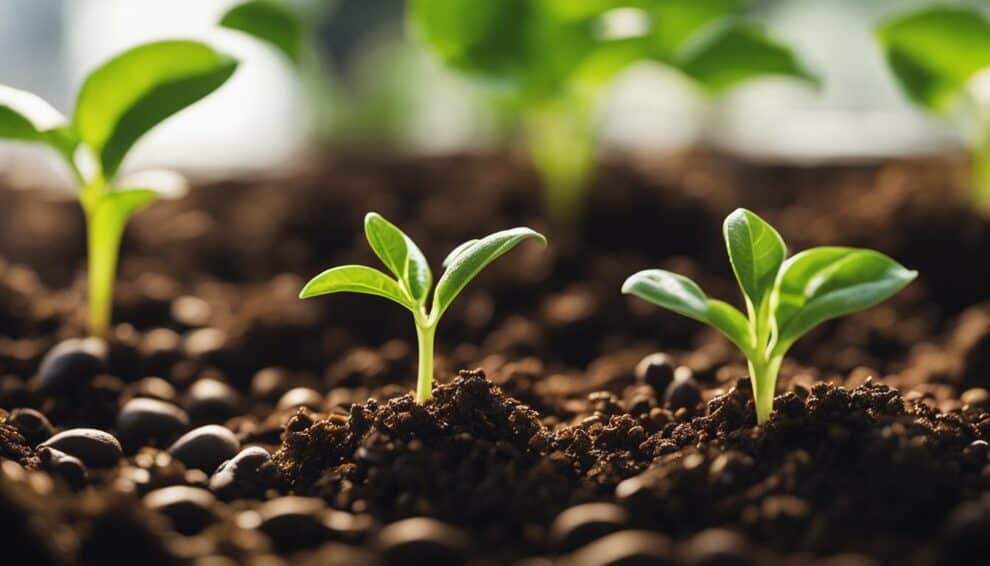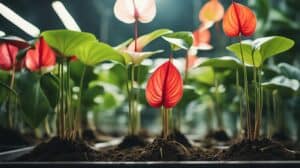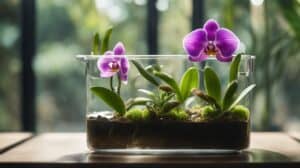Coffee is one of the most popular drinks worldwide, with millions of people drinking it every day.
However, many people are not aware of how coffee is grown and produced.
Coffee plants, also known as Coffea arabica, are the source of coffee beans and are grown in tropical regions around the world.
These plants can be propagated easily, allowing coffee enthusiasts to grow their own coffee plants at home.

In this article, we will provide a comprehensive guide on how to propagate Coffea arabica plants.
This guide is aimed at coffee lovers who want to grow their own plants and enjoy the process of coffee production.
The guide will cover the basics of Coffea arabica propagation, including the materials needed, the steps involved, and the best practices for growing healthy plants.
With this guide, readers will be able to start their own coffee plantations and enjoy the fruits of their labor.
Understanding Coffee Plant Propagation
Propagation Basics
Coffee plants are typically propagated through seeds, cuttings, or grafting.
Seeds are the most common method of propagation and are relatively easy to obtain.
However, it can take up to five years for a coffee plant grown from seed to produce fruit, which can be a long time to wait.
Cuttings, on the other hand, can produce fruit in as little as two to three years, making them a popular choice for propagation.
Grafting is another option, but it requires more expertise and is not commonly used for home gardeners.
When propagating coffee plants, it is important to choose healthy, disease-free plants as the parent plants.
The seeds or cuttings should be taken from the healthiest and most productive plants to ensure the best chance of success.
It is also important to provide the right growing conditions, including proper soil, water, and sunlight.
Benefits of Growing Your Own Coffee
Growing your own coffee plants can be a rewarding experience and provide a source of fresh, high-quality coffee beans.
It also allows you to have control over the growing conditions, ensuring that the plants are grown organically and sustainably.
Additionally, growing your own coffee can be a fun and educational hobby, allowing you to learn more about the coffee plant and the coffee-making process.
With a little patience and care, anyone can successfully propagate and grow their own coffee plants.
Preparing for Propagation

Before propagating coffee plants, it is important to prepare the necessary tools and materials and choose healthy parent plants.
This will increase the chances of success and ensure that the new plants are strong and healthy.
Choosing Healthy Parent Plants
The first step in preparing for propagation is to choose healthy parent plants.
Look for plants that are disease-free, pest-free, and have strong and healthy stems.
It is also important to choose plants that are at least two years old and have already produced berries.
This will ensure that the plants are mature enough to produce viable seeds.
Essential Tools and Materials
To propagate coffee plants, you will need the following tools and materials:
- Pruning shears
- Rooting hormone
- Seedling trays
- Potting soil
- Watering can
Pruning shears are necessary for taking cuttings from the parent plants. Rooting hormone is used to encourage root growth in the cuttings.
Seedling trays and potting soil are used to plant the cuttings and allow them to grow. A watering can is necessary to keep the soil moist.
By choosing healthy parent plants and gathering the necessary tools and materials, the propagation process will be much smoother and more successful.
Propagation Methods

Coffee plants can be propagated through two popular methods: seed germination and cuttings approach.
Both methods have their own advantages and disadvantages.
Seed Germination Technique
The seed germination technique is the most common method of propagating coffee plants. It is a simple and cost-effective method that can be done by anyone.
The seeds are first soaked in water for a day or two to soften the outer shell.
After that, they are planted in a pot with well-draining soil and kept in a warm, humid place.
The seeds usually take about 4-6 weeks to germinate.
Once the seedlings have grown to about 2-3 inches, they can be transplanted to a bigger pot or directly into the ground.
It is important to note that not all seeds will germinate, and it may take several attempts to get a successful crop.
Cuttings Approach
The cuttings approach involves taking a cutting from an existing coffee plant and rooting it in water or soil.
This method is faster than seed germination and ensures that the new plant will have the same characteristics as the parent plant.
To propagate using cuttings, select a healthy branch from the parent plant and cut it at a 45-degree angle.
Remove the leaves from the bottom half of the cutting and dip it in rooting hormone. Place the cutting in a pot with well-draining soil or in a jar of water.
Keep the soil or water moist and in a warm, humid place until roots begin to form.
Once the roots have formed, the cutting can be transplanted into a bigger pot or directly into the ground.
It is important to note that not all cuttings will root successfully, and it may take several attempts to get a successful crop.
Both propagation methods have their own advantages and disadvantages. It is important to choose the method that works best for your situation and resources.
With proper care and attention, coffee plants can be easily propagated and grown into healthy, productive plants.
Caring for Your New Coffee Plants

Optimal Growing Conditions
Coffee plants thrive in warm, humid climates with temperatures ranging from 60 to 70 degrees Fahrenheit.
They prefer bright, indirect light, so it’s best to place them near a window that receives plenty of natural light.
It’s important to keep the plants away from drafts and direct sunlight, as this can cause the leaves to burn.
Watering and Feeding
Coffee plants require regular watering to keep the soil moist, but not waterlogged.
It’s important to allow the soil to dry out slightly between waterings, as overwatering can lead to root rot.
During the growing season, coffee plants should be fertilized every two weeks with a balanced fertilizer to promote healthy growth.
Common Pests and Diseases
Coffee plants are susceptible to a number of pests and diseases, including spider mites, mealybugs, and fungal infections.
To prevent these issues, it’s important to keep the plants clean and free from debris.
Regularly inspect the leaves for signs of damage or discoloration, and treat any issues promptly with an appropriate pesticide or fungicide.
Overall, caring for your new coffee plants is relatively simple as long as you provide them with the right growing conditions, water and feed them properly, and keep them free from pests and diseases.
With a little bit of care and attention, you can enjoy fresh, homegrown coffee for years to come.
Frequently Asked Questions

What are the optimal conditions for coffee plant (Coffea arabica) growth?
Coffee plants thrive in warm and humid environments with temperatures between 60-70°F. They require bright, indirect sunlight and well-draining soil.
Coffee plants prefer a slightly acidic soil pH between 6.0-6.5.
How should I care for a coffee plant as a houseplant?
Coffee plants make excellent houseplants as long as they receive sufficient light and moisture.
Water your coffee plant regularly, keeping the soil consistently moist but not waterlogged. Fertilize your plant every 2-3 months with a balanced fertilizer.
Prune your coffee plant regularly to encourage branching and maintain its shape.
What are the best practices for fertilizing a coffee plant?
Fertilize your coffee plant every 2-3 months during the growing season (spring and summer) with a balanced fertilizer.
Use a fertilizer with equal parts nitrogen, phosphorus, and potassium. Avoid over-fertilizing, as this can damage the plant.
How often should I water my coffee plant?
Water your coffee plant regularly, keeping the soil consistently moist but not waterlogged. Allow the top inch of soil to dry out before watering again.
During the winter months, reduce watering frequency to prevent root rot.
What type of soil is most suitable for growing a coffee plant?
Coffee plants prefer well-draining soil with a slightly acidic pH between 6.0-6.5.
A good potting mix for coffee plants should consist of equal parts peat moss, perlite, and vermiculite.
Can you provide tips for encouraging branching in coffee plants?
To encourage branching in your coffee plant, prune the stem tips regularly. Pinch off the top two sets of leaves on each stem to promote lateral growth.
Pruning also helps maintain the plant’s shape and prevent it from becoming too leggy.












